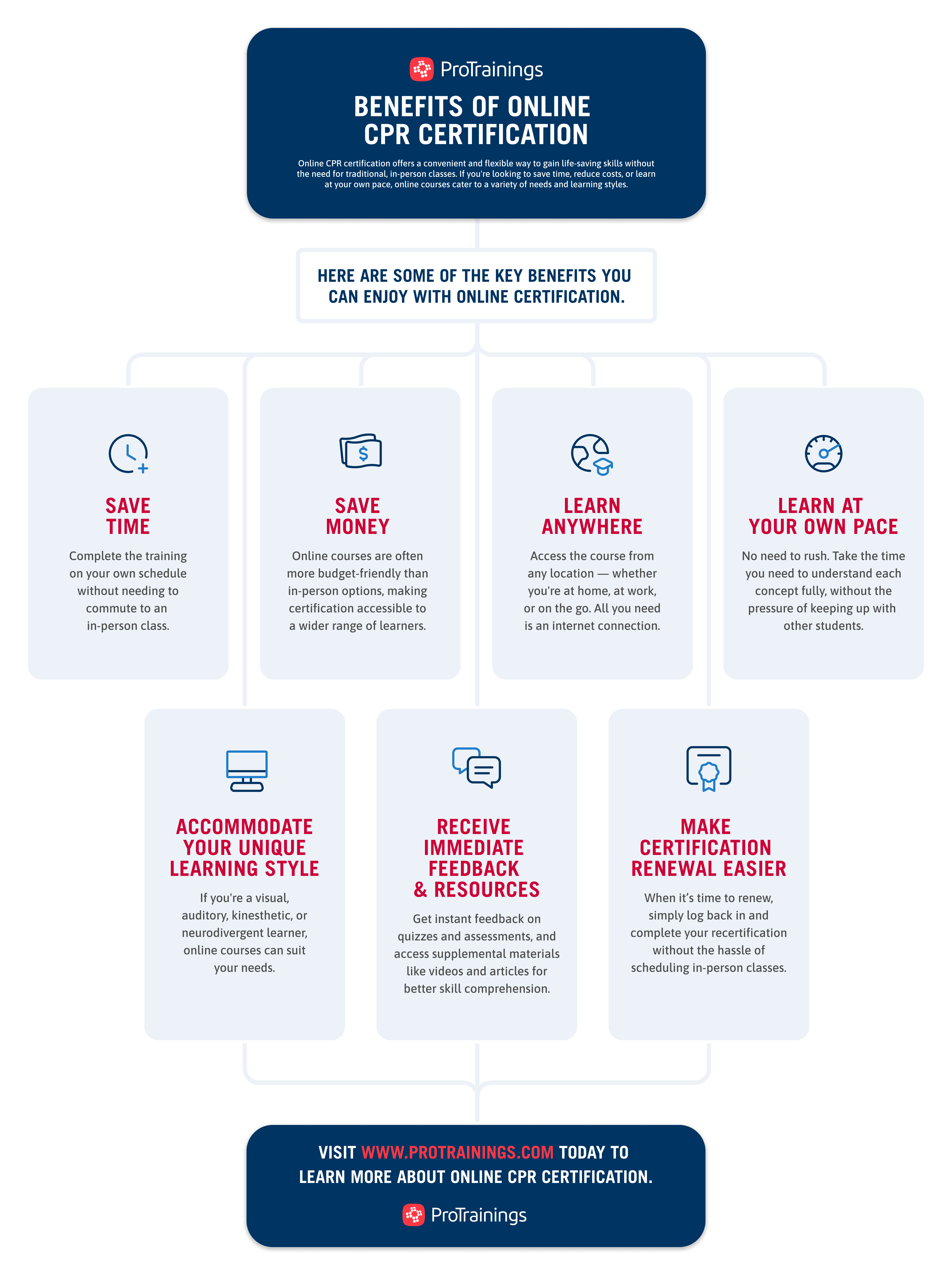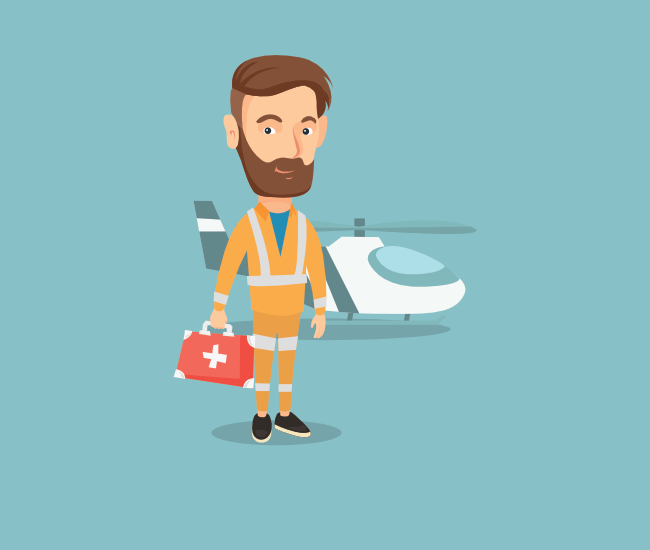Table of Contents
- Intro
- Myth: The AHA Is the Only Source of Good Training
- Myth: All CPR Classes Are In-Person & Take 4-6 Hours
- Myth: Online CPR Training Is Impossible or Illegitimate
- Myth: Only Medical Professionals Can Save a Life
- Overcoming Certification Procrastination with Your Teams
- CPR & First Aid Training Is for Everyone
Saving a life isn’t a simple thing to be taken lightly. It’s arguably one of the greatest acts you can do for another person. However, even though saving a life is remarkable, that doesn’t mean you should be intimidated by or succumb to elitist attitudes (i.e., “I’m not good/qualified enough” self-talk) about completing CPR and first aid training in order to learn the skills that can really make a difference.
The truth of the matter is that if someone is suffering a life-threatening event — such as cardiac arrest, stroke, drowning, etc. — some CPR, even imperfect CPR, is better than no CPR.
Any bit of CPR training is better than no CPR training.
However, many people don’t think they have the time, skills, or even the right as a non-medical professional to learn CPR.
The infographic below highlights seven powerful reasons why anyone should consider becoming CPR-certified.

There’s really no reason not to get trained in CPR and first aid. Now, we’re debunking four common myths that prevent people from getting CPR and first aid training.
Myth: The AHA Is the Only Source of Good Training
Many people and organizations look to the American Heart Association (AHA) as the standard for CPR best practices, training, and so on. As a result, a common myth is that only CPR training that comes directly from the AHA is legitimate.
But while AHA guidelines are often used by state boards and other accrediting organizations, the AHA isn’t the only qualified source of training in CPR and first aid.
CPR requirements may come from your state or licensing board; your employer; national bodies such as OSHA, CARF, or the Joint Commission; or all of the above. As long as your training meets the applicable requirements — and, most importantly, prepares you to save lives — it’s good training, even if it’s not through the AHA.
Curious about where the AHA receives its CPR guidelines? All official CPR recommendations come from the International Liaison Committee on Resuscitation (ILCOR) and are handed off to the AHA for distribution in the United States.
Myth: All CPR Classes Are In-Person & Take 4-6 Hours
Since the Covid-19 pandemic, the entire world has expanded its understanding of what can be done online. Just like going to work, attending school, or grocery shopping — all things that we all would’ve said had to be done on-site 10 years ago — CPR and first aid training is one of those things most people have long-held misconceptions about.
The truth is that you don’t have to go to a classroom to learn CPR and first aid.
And receiving this training doesn’t have to take up the majority of your Saturday. In fact, learning general CPR for adults can take as little as 1 hour and 40 minutes — and it can be done entirely online and at your own pace.
Think about this: You could save someone’s life and give them back years with their loved ones in exchange for 2 hours of your time watching CPR training videos online. Whether you prefer in-person, online, or blended options, there are learning modalities available to suit every student’s needs.
Myth: Online CPR Training Is Impossible or Illegitimate
For many people, the difficulty and inconvenience of attending in-person CPR and first aid training is a huge deterrent. At the same time, they view online training as insufficient, either to meet requirements or to provide the necessary skills and knowledge to administer emergency aid.
However, studies have shown that online training programs can be just as — if not more — effective than traditional classroom training, especially when those programs incorporate a blend of online learning and hands-on practice.
Our Head of Curriculum, Roy Shaw, explains more about the validity of online CPR certifications in this video.
Online CPR courses guide you through engaging modules at your own pace, with video demonstrations, interactive quizzes, and real-life scenarios. Many programs also offer optional hands-on practice sessions to reinforce your skills before certification.
CPR and first aid training doesn’t have to be exclusive to those who can afford to attend in-person classes. There are plenty of flexible, adaptable options available that provide equally as good, if not better, training.
Want to explore the benefits of online CPR certification to decide what’s best for your organization? Check out our infographic to learn more.

Myth: Only Medical Professionals Can Save a Life
“Leave it to the professionals” is common advice that applies to many situations — but not to saving lives in an emergency. Of course, first responders and medical professionals have specialized training and equipment, but until those professionals arrive on the scene, you may be the only person who can help — and some aid is much better than none.
As a bystander, you can make a difference. In 2014, “about 45 percent of out-of-hospital cardiac arrest victims survived” when a bystander performed CPR.
In fact, bystander CPR is “associated with a two- to three-fold increase in survival when compared to victims who had no CPR before the arrival of emergency medical services personnel.”
However, “only about 46 percent of those who suffered cardiac arrests outside of a hospital in 2017 received bystander CPR”, indicating that we need more people to be trained in CPR so they can help when seconds count.
Understanding the reasons people hesitate to perform CPR can help address these barriers and encourage more individuals to step up in emergencies. Common barriers include fear, uncertainty, and misconceptions. Breaking down these obstacles empowers bystanders to take action.
This is why it’s so important for everyone to get CPR and first aid training, whether your job requires it or not.
You don’t have to be a medical professional to save a life.
You just have to be willing and able to help and (ideally) trained in CPR. If you’ve hesitated to get CPR certified because you’re not a medical professional, don’t put it off any longer. Anyone can get CPR and first aid training, and anyone can step up to help save lives.
Overcoming Certification Procrastination with Your Teams
Tackling the challenge of procrastination in certification processes starts with understanding the psychology behind team productivity and decision-making. When you address these psychological aspects, you can transform the way your team approaches certifications, like CPR training, and boost compliance and engagement for your entire organization.
A key factor in motivating your team is helping them understand why the certification matters. People are more likely to engage with tasks when they comprehend the broader meaning behind them.
Communicating the real-world implications of certification involves stating the requirements and explaining how they impact their role, as well as how it can directly affect their community of friends, family, and neighbors. Effective communication around the importance and personal relevance of the task goes a long way.
Another critical element is simplifying the decision-making process surrounding certifications. Reducing the number of choices and streamlining procedures can lead to more efficient decision-making and lower procrastination rates.
When faced with too many options, individuals can experience decision paralysis, where the abundance of choices overwhelms them and prevents them from taking action. With a straightforward process, you help your team avoid this paralysis and make timely decisions.
Simplification can also alleviate decision fatigue, which often results from having to make numerous choices or handle complex procedures.
Implementing strategies that reduce the cognitive load on your team can facilitate better compliance and productivity.
CPR & First Aid Training Is for Everyone
Getting trained and certified to administer CPR and first aid in a crisis should be a top priority for us all, but too often people are led to believe that it’s not worth the trouble or that they won’t be able to afford legitimate training.
The truth is that good CPR and first aid training is both available and affordable. And here at ProTrainings, we’re committed to helping as many people as possible get that training so that together, we can make this world a safer place.
Contact us today to learn how ProTrainings can help make getting your staff CPR certified easier and more efficient.
